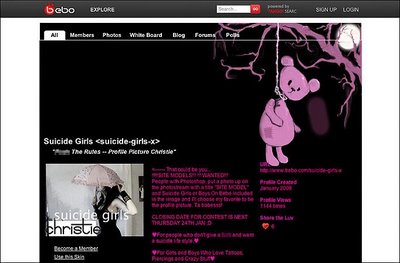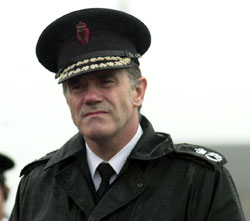Suicide by churnalism.
Again though, this is a prime example of churnalism in action. It seems that none of the newspapers had reporters at the actual inquest, which naturally heard forensic detail about how the man had set-up and activated the chainsaw in order to kill himself, but rather that all the information was provided by the Press Association. The PA itself quickly realised that the first report had gone too far in giving a blow by blow account of the exact facts of the case, and issued an edited follow-up. By then though the initial account had been put up across the web, and few seem to have replaced it with the updated version. As Nick Davies argued in Flat Earth News, PA and the other wires are often considered to be authoritative and therefore don't need to be double-checked, even though they themselves are under the same time constraints as their print counterparts are. Likewise, in this instance few of the newspapers bothered to edit the initial report, or even if they did didn't edit it enough to the PCC's liking, which seems to have investigated the reports without an actual complaint being made, presumably because of their own concern about them.
The PCC emphasised the importance of editing in its statement:
However, this was not a sufficient defence [the copy having came from the PA]. Indeed, this case demonstrated the importance of the editing process in removing excessive detail before publication – both online and offline.
Of the 14 articles that were investigated, only the Metro's print version and the one in the Guardian were ruled to have not breached the code. The Guardian's is worth quoting because it seems to sum everything up perfectly concisely, without dwelling on the story:
A man cut off his own head with a chainsaw because he was "irrationally opposed" to leaving his home, which was due to be demolished, an inquest heard yesterday. David Phyall, 50, rigged the machine up with a timer before swallowing painkillers at his housing association flat in Bishopstoke, Hampshire, on July 5, the hearing at Winchester was told. At the time of his death Phyall, who had suffered from mental illness, was the only person living in the 1960s block. Recording a verdict of suicide, coroner Simon Burge said Phyall was "irrationally opposed to moving".
The PCC's adjudication decided "in a difficult judgement call" that the newspaper had "stayed on just the right side of the line". In others, such as the Sun's print version and the Daily Star, it decided that the opposite was the case and that they had included just "slightly too much" detail. None though responded in the way which the Daily Mirror did, which claimed that the method of suicide was so "exceptional" that reporting it was in the "public interest". Perhaps not knowing which battles to fight and which to not, it went on to argue that it didn't believe that copycats were likely, and "also questioned whether the restriction on the right to report inquests in full was practicable for newspapers or consistent with the principle of open justice". The Mirror might have had a point if the PCC were objecting to the details of a murder being reported in such a way, or if it was genuinely restricting the right to report on inquests completely rather than just asking newspapers to show discretion over cases involving suicide or apparent suicide, which are rarely of such public interest that the full details need to be known for justice to be seen to have been done, but it wasn't. Interestingly, the Mirror's Scottish sister, the Daily Record, accepted in good grace that its report had breached the code, "apologised, and acted to make sure that the back bench and night desk were more familiar with the terms of the Code in this area", which seems like a model response.
You could understand the Mirror's response more if its own reporters and editors had been involved in the story other than rewriting or editing it slightly, but they weren't. Surely the fact that the copy had been provided by an outside source, even if one routinely used, meant that it should have come under more attention, especially on a subject where the code is more than clear. Perhaps the reaction was more to do with the fact that the Mirror, along with the Express group and the Independent are the papers which have the fewest resources to work with and so less time to spend on messing around with the wire copy, especially when it is seen as high quality. Indeed, the Express recently made more than half of its subeditors redundant, with the Star having already done similar. Accordingly, the Star was raked over the coals while the paper protested that its sister had edited the story down to just mentioning the chainsaw, as if that was a defence.
As the recession takes hold and advertisers further desert the print media, more job losses are inevitable. With them will come the further triumph of churnalism, and as newspapers continue to try to appeal across the board and do everything, even more mistakes and complaints with them will be made. The future is, as Peter Wilby argues, the niche - either highbrow or lowbrow, not trying to be both. You can imagine that the Mail and Sun will likely survive, as will probably the Torygraph, Times and Guardian in their current forms, at least for now - the others may well fall by the wayside or go online only, although I can't imagine many seeking out the Star, Express or Mirror websites when everything they do is done elsewhere and almost always better. Before that happens, things will probably deteriorate rapidly, and like with the other victims of the recession outside those being made unemployed at least so far, the papers and their owners will have few others to blame but themselves.
Labels: churnalism, media analysis, media reporting, Press Complaints Commission, recession, suicide




